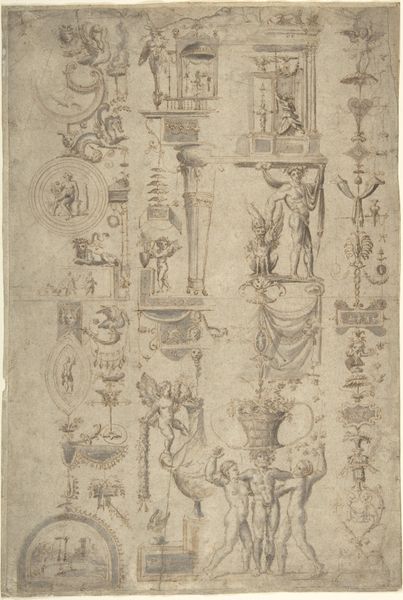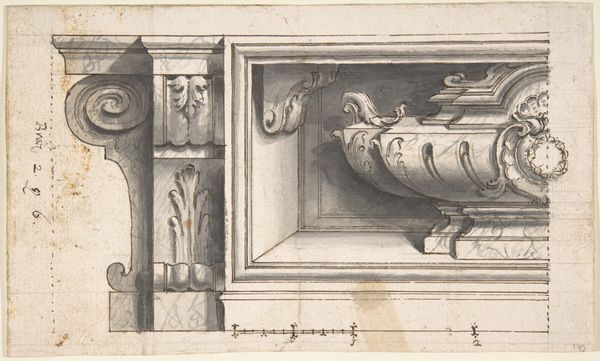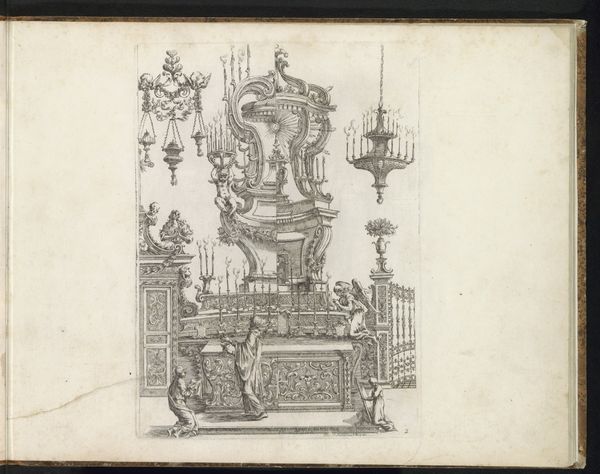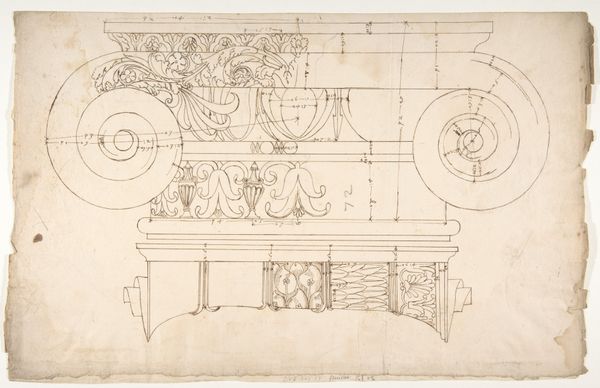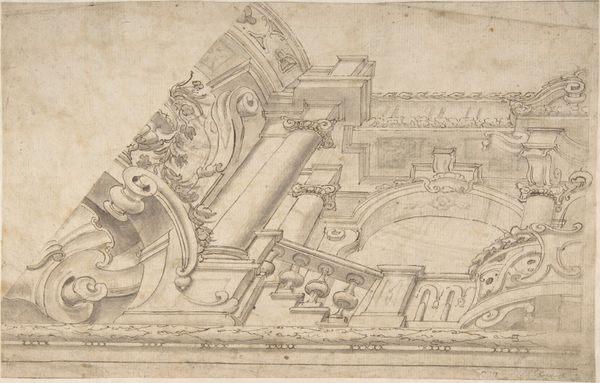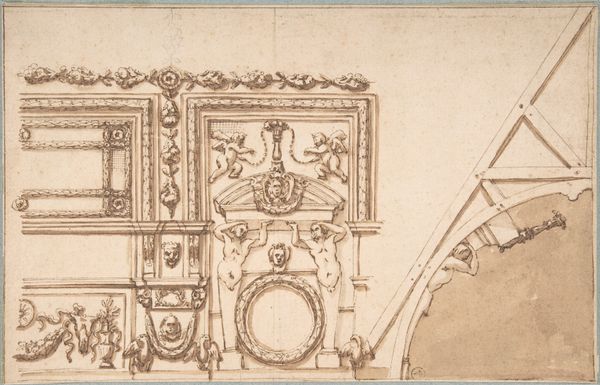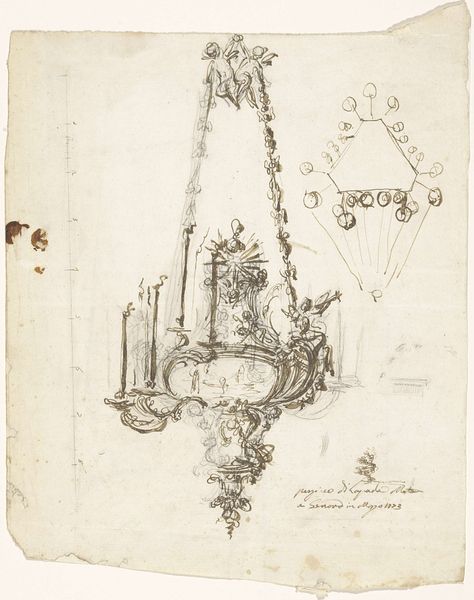
Study sheets with sketches of interiors, animals, sculpture, figures, notes 1500 - 1600
0:00
0:00
drawing, print, ink
#
drawing
# print
#
11_renaissance
#
ink
#
genre-painting
#
northern-renaissance
Dimensions: each sheet: 4 5/16 x 6 1/8 in. (11 x 15.5 cm)
Copyright: Public Domain
Editor: So this piece, “Study sheets with sketches of interiors, animals, sculpture, figures, notes,” made around 1500-1600 by an anonymous artist, seems almost like a glimpse into daily life back then. It's created with ink using a print and drawing technique. What particularly strikes me is the detail – like a snapshot of a domestic space. What catches your eye in this drawing? Curator: I see an inventory. An inventory of objects, certainly, but also a record of making and production. The artist diligently documents the furnishings and implements within a domestic space, which suggests a connection to class. Consider the bed: is this an object of comfort or of labor? And the sheer number of things displayed—do they indicate wealth? Editor: That's an interesting perspective. I was focused on the artistry itself, but thinking about it as an "inventory" shifts my perception. It makes me wonder about the economic context. What can all these domestic tools and arrangements of the house, and the decision to portray these items specifically, tell us about the social class? Curator: Exactly. And let’s consider the labor involved in creating these items. Look at the hanging tapestries, the intricate glasswork... Where were these items produced, and by whom? How did the artist engage with those labor processes in choosing to represent them? The image serves as evidence of consumption patterns and trade routes during the Northern Renaissance. It challenges us to look past the aesthetic and into the material reality it depicts. Do you see any evidence of how these tools would affect daily life or production? Editor: Seeing it this way reveals layers I completely missed initially. I was drawn in by the seeming candidness, but the details of craft, consumption, and labor tell a much more nuanced story about production within the culture. Curator: Precisely. Looking at art this way always makes it more tangible. It makes history much more understandable.
Comments
No comments
Be the first to comment and join the conversation on the ultimate creative platform.
